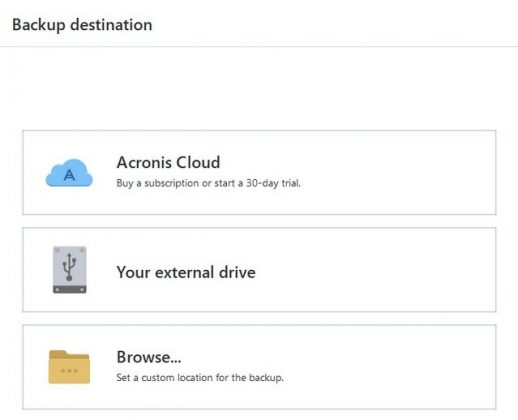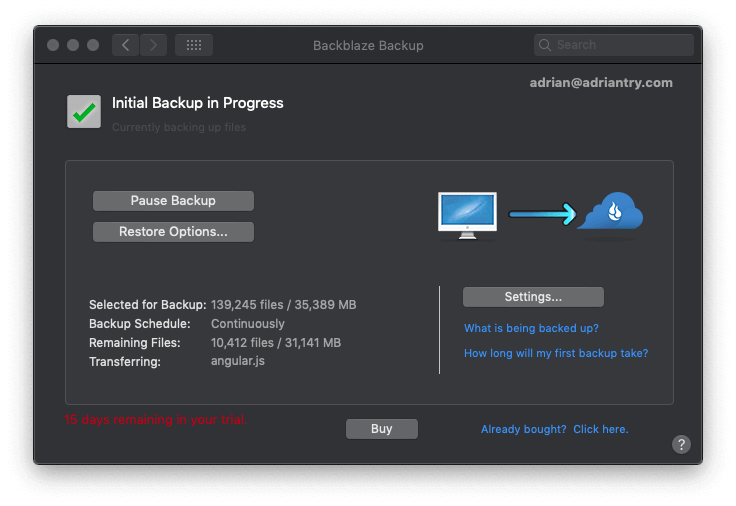

I can’t give a recommendation without expressing my disappointment in the way Code42, owners of CrashPlan, handled this change. In my family, we used CrashPlan but will discontinue immediately. We suggested CrashPlan to larger families since the family plan backed up ten users for $150 a year. Although our primary recommendation for online backup is Backblaze, some of our clients were using CrashPlan. Backblaze’s (relatively) new B2 cloud storage service runs around $60 per terabyte-year that’s a big enough downward jump in price to make me start to think about it as a practical alternative to something like IDrive.Earlier this week, CrashPlan announced it was discontinuing its pricing for home users. I’ve used Amazon S3 for this in the past, but although prices are always dropping they are still fairly high at present, S3 costs about $275 per terabyte-year. The FutureĪnother long term option for some systems would be to move from IDrive to raw cloud storage. On those machines, I have the option of explicitly adding more directories to be backed up, or removing the default sources and asking it to back up everything and excluding the excess as I have done with Backblaze. This is probably the right approach for this service to take given the storage limits, but it doesn’t fit some of my development systems very well. If you have other directories under your home directory, you need to remember to add them. AppData is not included by default, so anything an application might be keeping in there isn’t being saved unless you want it to.
#Crashplan alternative 2017 windows#
For example, their defaults for a Windows machine are to back up just your personal Desktop, Documents, Music, Pictures and Videos directories. IDrive’s defaults are more appropriate for a consumer offering. There’s not a lot of data per machine, though, so IDrive’s service model of a fixed storage limit across any number of machines allows me to use them for “everything else”. With Backblaze taking care of my main development machine, I still have a lot of other things that need to be protected. My main issue in adopting it has been to temporarily exclude some low-priority data to allow the important material to be backed up first, and excluding some cache locations it doesn’t know about already (I’m looking at you, EVE Online’s 20GB SharedCache directory stored under ~/Library). It defaults to backing up essentially all non-system files with some exclusions so for a developer who has a lot of data in non-standard locations I get a good feeling that if I add new data it will be protected by default. It’s an unlimited-storage deal, but for a single computer rather than many. They are very transparent about the way they build their storage systems and what they know about hard drive reliability, so I don’t have as many concerns that this will turn out to be an unsustainable business for them.īackblaze’s Personal Backup service fits my primary machine perfectly. They have regularly sponsored podcasts I listen to, and the hosts there also seem to be using it. John Gruber recommends it, specifically as a CrashPlan alternative. I have been aware of Backblaze for some time. I have ended up picking a combination of services from their top two picks: Backblaze and IDrive. This meant that the choice was relatively open for me, and I was able to find a good review of the leading options. Of saying “it’s really four times this price”). More expensive after the first year (a 75% discount on year 1 is another way Involves a number of machines with relatively small storage needs.

The recommended replacementsĬarbonite) are both significantly more expensive for my situation, which That it is being discontinued, so I needed Unfortunately, this was so generously provisioned and so aggressively priced My current cloud backup regime involves some judicious use of Amazon WebĬrashPlan for Home: unlimited cloud backups for up to 10 machines.

My first forays into cloud backup involved a Pogoplug device, then services from Jungle Disk and Carbonite. That used to mean sending physical storage (magnetic tapes, CDs, DVDs, HDDs) to another location these days using the Internet to continuously trickle updates to cloud storage is the way to go. Over and above the measures I take locally to preserve data against loss from things like equipment failure, I’m a big believer in off-site backups as a hedge against catastrophic loss: fire or theft, for example. Unfortunately, the cloud service I’ve been using for the last few years has just been discontinued, so it’s time to pick something new. Local backup is not enough, though, so most of this is also backed up to the cloud. Locally, my Macs all use Time Machine, the servers all have RAID of some kind, and virtual machines are regularly backed up using Bacula.


 0 kommentar(er)
0 kommentar(er)
